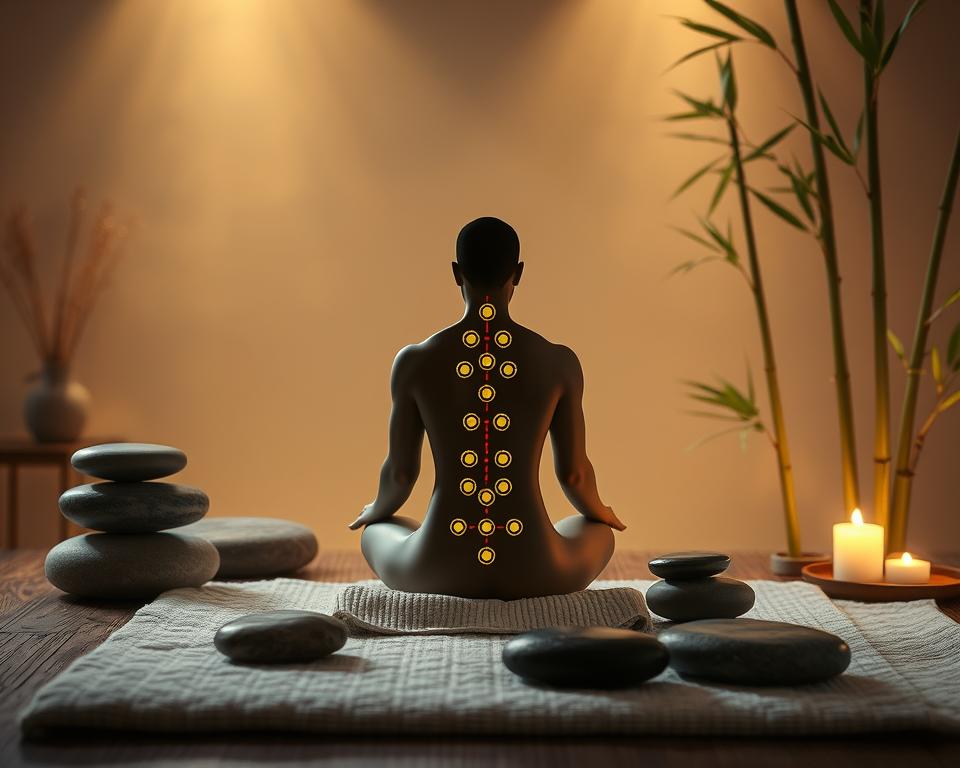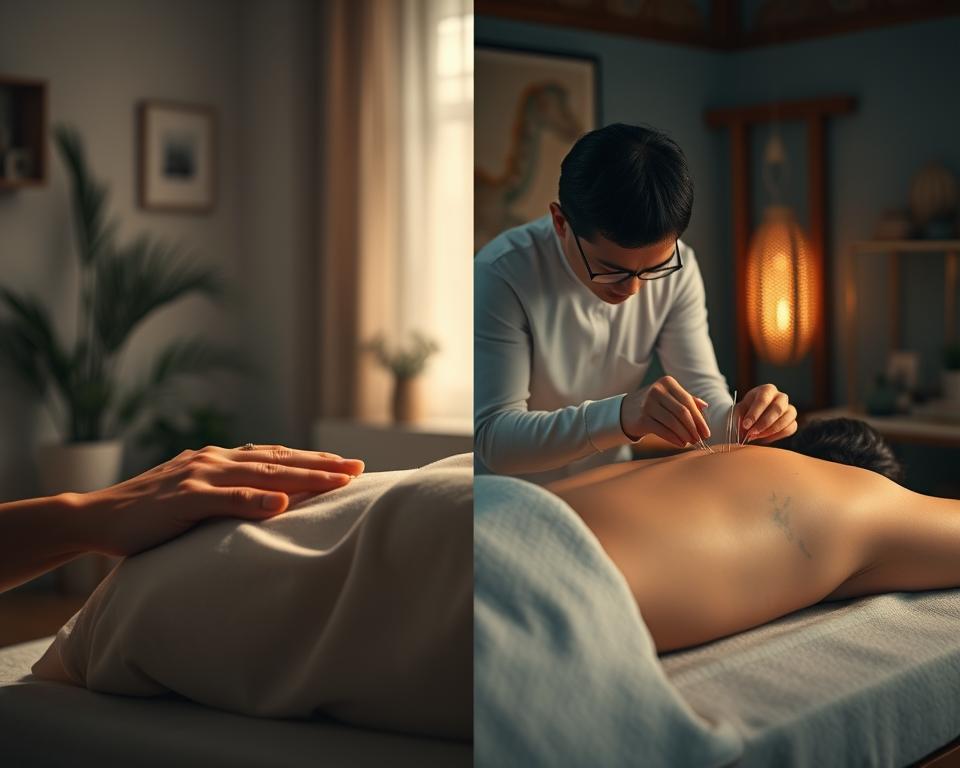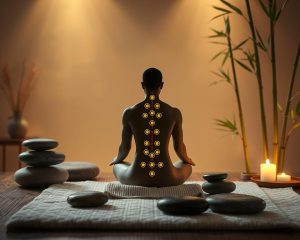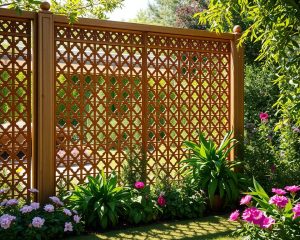
ACP acupressure uses touch to ease pain and boost well-being. It focuses on certain body points to move energy, or qi, and heal. This natural method is seen as a safe, effective, and drug-free way to manage pain.
By applying pressure on specific points, ACP acupressure can tackle many health issues. This includes chronic pain, migraines, stress, and anxiety. Learning about this ancient practice can help you unlock your body’s healing power. It’s a step towards better physical, emotional, and mental health.
This guide will dive into ACP acupressure’s history, principles, and how to use it. You’ll learn how to use it for natural pain relief and better health. Start a journey towards holistic wellness and see the benefits of this ancient practice.
Read more interesting information at ::beauty-hair-news
What is ACP Acupressure?
Acupressure is a holistic therapy based on traditional Chinese medicine. It uses gentle pressure on specific body points, called acupressure points or meridians. This helps to heal and solve health issues. ACP acupressure, or Acupressure Chiropractic Palpation, mixes acupressure with chiropractic methods.
Understanding Acupressure’s Origins
Acupressure started in ancient China. It was believed that the body’s energy, or Qi, moves through meridians. Practitioners pressed these points to help Qi flow, keeping the body and mind healthy.
The Principles Behind ACP Acupressure
ACP acupressure uses acupressure’s basics but adds chiropractic techniques. It aims to fix energy flow imbalances by pressing certain points. This method is thought to heal, lessen pain, and boost health.
“Acupressure is a gentle yet powerful technique that harnesses the body’s innate ability to heal itself by targeting key points along the energy meridians.”
acp acupressure
ACP acupressure blends traditional Chinese medicine with chiropractic methods. It aims to balance the body’s energy, called Qi, by applying pressure to certain points. This helps restore harmony to the body.
The core of acp acupressure is the idea that blockages in the body’s energy channels cause health problems. These can include pain, discomfort, and emotional issues. By stimulating specific points, practitioners help release these blockages, allowing Qi to flow freely.
ACP acupressure differs from traditional acupressure by adding chiropractic techniques. Practitioners use their hands to apply pressure and also make gentle spinal adjustments. This helps realign the body and improve energy flow.
“ACP acupressure integrates the ancient wisdom of Chinese medicine with the modern principles of chiropractic care, creating a holistic approach to health and wellness.”
By mixing these methods, ACP acupressure offers a comprehensive solution for many health issues. It can help with chronic pain, stress, and anxiety. If you’re looking for natural pain relief or a way to boost your well-being, ACP acupressure might be right for you.
Benefits of ACP Acupressure Therapy
ACP acupressure is a holistic way to improve your health. It works by pressing certain points on the body. This can help with pain, improve blood flow, and make you feel relaxed.
Pain Relief and Management
ACP acupressure is great for easing physical pain. It targets specific points for headaches, muscle tension, and joint pain. The pressure helps release muscle knots, improves blood flow, and reduces inflammation.
This leads to less pain and better movement.
Improved Circulation and Relaxation
ACP acupressure also boosts circulation and relaxation. It helps regulate the body’s energy flow, or qi. This improves blood and lymph circulation.
Such improvements can reduce stress, help you sleep better, and balance your emotions.
| Benefit | Description |
|---|---|
| Pain Relief | Acupressure can help alleviate various types of pain, including headaches, muscle tension, and joint pain. |
| Improved Circulation | Acupressure stimulates the body’s natural energy flow, leading to better blood and lymph circulation. |
| Relaxation | The gentle pressure applied during acupressure sessions can induce a state of deep relaxation, reducing stress and improving overall well-being. |
“ACP acupressure is a powerful tool for natural pain relief and overall wellness. By targeting specific pressure points, practitioners can help restore balance and harmony within the body.”
Acupressure Points for Common Ailments
The ancient practice of acupressure uses pressure on specific body points, called meridians. These acupressure points are linked to health issues. By focusing on them, people can find relief from many common problems.
Knowing where and how to use these acupressure points is key. Here are some of the most used acupressure points and their benefits:
- For digestive issues: Pressing the Pericardium 6 (P6) point on the inner forearm can ease nausea, vomiting, and other stomach troubles.
- For respiratory concerns: The Lung 7 (LU7) point on the wrist helps clear airways and improve breathing.
- For headaches and migraines: The Large Intestine 4 (LI4) point, between the thumb and index finger, can help with headaches and migraines.
- For stress and anxiety: The Shen Men (HT7) point on the inner wrist helps relax and lower stress.
| Acupressure Point | Location | Potential Benefits |
|---|---|---|
| Pericardium 6 (P6) | Inner forearm | Digestive issues (nausea, vomiting) |
| Lung 7 (LU7) | Wrist | Respiratory concerns (congestion, breathing) |
| Large Intestine 4 (LI4) | Between thumb and index finger | Headaches and migraines |
| Shen Men (HT7) | Inner wrist | Stress and anxiety |
Understanding acupressure points and techniques can help manage common health issues. Always seek advice from a skilled acupressure practitioner for safe and effective treatment.
Acupressure Massage Techniques
Acupressure is an ancient practice from Traditional Chinese Medicine. It helps with pain relief and well-being. It uses firm pressure on specific body points, called acupressure points.
These points can be reached through different massage techniques. This makes it easy to enjoy acupressure at home or with a professional.
Self-Acupressure vs. Professional Treatment
Acupressure massage is versatile. You can do self-acupressure with your fingers or tools. It’s a good way to manage pain and relax.
But, professional acupressure therapy offers a more detailed approach. Practitioners know the body’s meridians well. They use various techniques for better results.
| Self-Acupressure | Professional Acupressure Therapy |
|---|---|
| Convenient and cost-effective | Comprehensive and personalized |
| Requires understanding of acupressure points | Delivered by trained practitioners |
| Addresses general well-being | Tailored to specific health concerns |
| Promotes self-care and empowerment | Provides a holistic approach to wellness |
Choosing acupressure massage yourself or with a pro can change your life. It unlocks your body’s healing power. Start your journey to better health today.
Traditional Chinese Medicine and Acupressure
Traditional Chinese medicine (TCM) is the base of acupressure. It focuses on Qi, the life force that flows through the body. Acupressure uses gentle pressure to balance Qi by targeting specific points.
The Meridian System and Qi Energy
TCM sees the body as a system of 12 meridians. Each meridian is linked to an organ or function. When Qi flow is blocked, it can cause health issues.
By applying pressure to certain points, acupressure helps restore balance. This promotes the body’s healing and Qi flow.
| Meridian | Associated Organ | Primary Functions |
|---|---|---|
| Lung Meridian | Lungs | Respiration, Immune System |
| Large Intestine Meridian | Large Intestine | Elimination, Detoxification |
| Stomach Meridian | Stomach | Digestion, Metabolism |
| Spleen Meridian | Spleen | Nutrient Absorption, Circulation |
| Heart Meridian | Heart | Cardiovascular Function, Emotions |
Understanding the meridian system and Qi helps practitioners. They can tackle many health issues with traditional Chinese medicine and acupressure.

“Acupressure is a non-invasive, drug-free approach to promoting the body’s natural healing abilities by stimulating specific points along the meridian system.”
Acupressure for Pain Relief
Acupressure is a traditional Chinese medicine technique that helps with pain relief. It involves applying pressure to certain points on the body. This can ease headaches, muscle tension, joint pain, and even chronic pain.
Acupressure works by releasing endorphins, the body’s natural pain fighters. When done right, it can start the body’s healing process. It helps reduce inflammation and improves blood flow to sore areas.
One great thing about acupressure is that it’s non-invasive and holistic. It’s a drug-free option that targets the pain’s source, not just the symptoms. This makes it a safer choice than some pain meds.
| Acupressure Technique | Targeted Pain Relief |
|---|---|
| Pressing the “Third Eye” point | Headaches and migraines |
| Applying pressure to the “Liver” point | Joint pain and arthritis |
| Massaging the “Shoulder” point | Neck and shoulder tension |
Using acupressure can help you manage pain on your own. It’s a way to find relief without needing medication or surgery.
If you’re dealing with chronic pain or just occasional aches, try acupressure. It’s a natural, effective way to find relief. This ancient practice is still helping people today.
Acupressure Therapy for Chronic Conditions
Acupressure therapy is known for easing acute pain. It also helps with chronic health issues. It works by fixing energy flow imbalances in the body. This can ease symptoms of long-term problems like migraines and headaches.
Treating Migraines and Headaches
Applying pressure to certain acupressure for pain relief spots can lessen chronic headaches and migraines. It’s a natural way to help those who suffer from these issues. It’s a good option for those looking for relief.
Acupressure aims to solve the causes of migraines and headaches. This includes stress, muscle tightness, and energy flow problems. By using specific points, it helps balance and flow of Qi, the life force in Traditional Chinese Medicine.
- Acupressure points on the head and neck, such as the Gallbladder 20 and Large Intestine 4, can be targeted to alleviate migraine pain and tension headaches.
- Points on the hands and feet, like the Kidney 1 and Liver 3, can also be effective in managing chronic headache conditions.
- Regular acupressure therapy sessions can help reduce the frequency and intensity of migraines and headaches, leading to improved quality of life for individuals suffering from these chronic ailments.
Adding acupressure for pain relief to a wellness plan is a natural way to tackle chronic health issues. It works alongside traditional medicine. It helps people take control of their health and well-being.
Acupressure Techniques for Stress and Anxiety
Acupressure is an ancient practice from Traditional Chinese Medicine. It’s a natural way to handle stress and anxiety. By pressing certain points on the body, it can ease stress and bring calm.
Using acupressure techniques is great because you can do it yourself. Learning to find and press the right points lets you manage stress on your own. This way, you can find relief whenever you need it.
Acupressure Points for Stress and Anxiety Relief
- The Inner Gate (P6) point, on the inside of the wrist, helps calm anxiety and insomnia.
- The Union Valley (LI4) point, between the thumb and index finger, reduces tension and relaxes.
- The Three Mile Point (ST36), on the outer lower leg, helps manage stress and boosts well-being.
Regular use of these acupressure techniques can be a big help in dealing with daily stress. It lets you take charge of your mental and emotional health.
“Acupressure is a powerful yet simple way to tap into the body’s natural ability to heal and find balance. By targeting specific points, we can activate the parasympathetic nervous system, leading to a profound state of relaxation and stress relief.”
Acupressure therapy can change your life, especially when you’re looking for natural stress relief. By adding these techniques to your daily routine, you can find peace and calm.
Integrating Acupressure into Your Wellness Routine
Adding ACP acupressure to your wellness routine can greatly benefit your health. You can do it yourself or see a trained practitioner. The benefits of acupressure include easing physical pain, reducing stress, and promoting relaxation.
One big plus of acupressure techniques is how easy they are to use. You can do self-acupressure at home to help with headaches, muscle tension, or digestive issues. Just a few minutes a day can make a big difference in how you feel.
Seeing a certified acupressure practitioner can offer more benefits. They can assess your needs and use acupressure techniques to help with pain, circulation, or stress. A skilled practitioner will guide you to meet your wellness goals.
Adding ACP acupressure to your routine can greatly improve your well-being. It’s a natural way to enhance your health and balance. By using this holistic approach, you can experience many benefits of acupressure.
“Acupressure is a simple yet effective way to take charge of your own health and well-being. By tapping into the body’s natural healing abilities, you can find relief and restore balance in your life.”
Choosing the Right Acupressure Practitioner
When looking for acupressure therapy or acupressure treatment, picking a skilled practitioner is key. They should be trained in traditional Chinese medicine and acupressure. They must also know the ACP acupressure method well.
Here are some things to think about when picking a practitioner:
- Look for proper training and certification in acupressure and traditional Chinese medicine.
- Choose someone with years of experience in acupressure treatment.
- Make sure they use sterilized equipment and follow safety rules.
- They should be able to adjust the acupressure therapy to fit your needs and goals.
It’s also important to feel at ease with your acupressure therapy practitioner. Talk to them about their approach and experience. Make sure they listen to your concerns and give you personalized care.
Ensuring Safe and Effective Treatment
When getting acupressure treatment, safety comes first. Your practitioner should follow good hygiene and use clean equipment. They should also know about the risks and when to avoid acupressure therapy.
A skilled acupressure therapy practitioner will tailor the treatment to you. They’ll consider your health history, symptoms, and goals. This way, they can make sure the acupressure treatment works best for you.
“Choosing the right acupressure therapy practitioner is crucial for achieving the best possible results and ensuring a safe, effective treatment experience.”
Acupressure vs. Acupuncture: What’s the Difference?
Acupressure and acupuncture both come from traditional Chinese medicine. Yet, they differ in how they aim to balance the body. Knowing the differences helps people pick the best method for them.
Acupressure uses manual pressure on certain body points called acupressure points. These points are linked to energy channels in the body. By pressing on these points, acupressure helps move energy and relieve health issues. It’s a simple method that can be done by oneself or with a professional.
Acupuncture, however, uses thin needles in these same points. The needles are placed to stimulate the energy channels and balance the body’s energy. This method is more invasive and needs a trained acupuncturist.
Both acupressure and acupuncture aim to heal by boosting the body’s natural healing. But, they differ in how invasive they are and their techniques. Acupressure is seen as softer and easier to access. Acupuncture might be better for some issues because it deeply stimulates the energy system.
| Feature | Acupressure | Acupuncture |
|---|---|---|
| Technique | Manual pressure on acupressure points | Insertion of fine needles into acupressure points |
| Invasiveness | Non-invasive | Invasive |
| Practitioner | Can be self-administered or performed by a trained practitioner | Requires a licensed acupuncturist |
| Purpose | Promote Qi flow and balance | Stimulate meridians and restore Qi balance |
The choice between acupressure and acupuncture depends on personal preference, health concerns, and access to practitioners. Knowing the differences helps make a choice that fits one’s needs and wellness goals.

Tips for Maximizing Acupressure Benefits
To get the most out of acupressure, be consistent. Doing it regularly or seeing a pro can lead to lasting changes. Listen to your body to work with your acupressure expert on a plan that fits you.
Adding acupressure to your wellness routine can boost your health. Pair it with meditation or yoga for better stress management and relaxation. This way, you can achieve a balance in body, mind, and spirit.
Consistency, self-awareness, and teamwork with your practitioner are key. With an open mind and dedication to your health, you can enjoy natural pain relief and better vitality.







